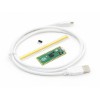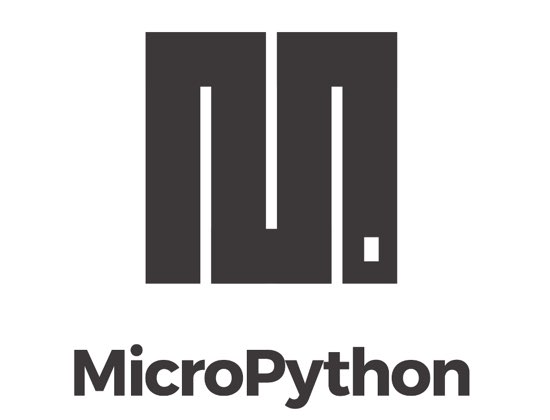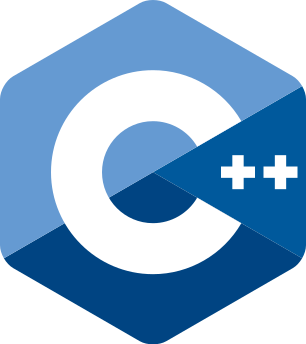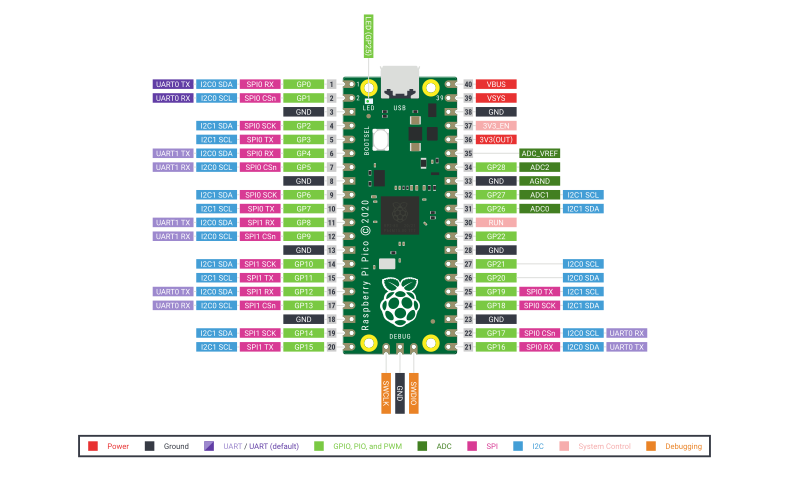- -zł4.00





The Raspberry Pi Pico is the first board to feature a microcontroller designed by the Raspberry Pi foundation. The chip that is the heart of this board has been equipped with two ARM Cortex M0+ cores operating at a frequency of 133 MHz, 256 KB of RAM and 30 GPIO ports. The microcontroller itself is not equipped with flash memory, but on the board there is an external memory with a capacity of 2 MB connected via the QSPI interface. The platform supports the popular MicroPython and C/C++ programming languages. Programs can be uploaded to memory via the USB interface in mass storage mode or by using an external programmer that supports the SWD interface.

Kamami is the official distributor of Raspberry Pi minicomputers and dedicated accessories.

MicroPython is a special version of the Python 3 programming language, prepared to run directly on embedded systems such as the Raspberry Pi Pico. The version prepared especially for the RP2040 microcontroller, supports REPL, an interactive shell that allows you to execute scripts, typing into the console and viewing the results of the program in it. Thanks to this technology, it is also possible to save the program in flash memory.
To facilitate the programming of the RP2040 microcontroller in C / C ++, the Raspberry Pi Foundation has prepared an official SDK toolkit that can be integrated with popular IDEs such as Visual Studio Code or Eclipse. The entire environment configuration process is described in the Getting started with Raspberry Pi Pico document.


The Raspberry Pi Pico can be programmed via the USB interface, it can be done in two ways.
The first is the USB mass storage mode, to program the board in this way, press and hold the BOOTSEL button, and then connect the board to the computer with a USB cable. The device will be recognized as mass memory to which you can upload the program in the same way as copying files to a pendrive. After uploading the program, the microcontroller will automatically reset and start the uploaded program. This method is suitable for uploading programs written in C / C ++ or for uploading the MicroPython interpreter.
The second way works only with programs written in MicroPython and requires prior loading of the interpreter using the first method. This method consists in saving the program layout transferred with REPL in the memory.
When programming in C/C++, there is often a need to repeatedly test the program. Loading a program via USB requires repeating the procedure every time, disconnecting the board from the computer, pressing the button and connecting the board, and then finding the compiled program and copying it to memory. The whole thing takes quite a long time, but fortunately it can be simplified using an external programmer with SWD interface. Programming via SWD is much faster, you only need to connect the programmer once with a 3-pin connector and power supply e.g. via USB and you can upload programs directly from the IDE. In addition, you can debug the program in this way and efficiently find any errors in the code by running it line by line.
The Raspberry Pi Pico is designed to be programmed directly with the Raspberry Pi 4B or 400. The manufacturer has prepared detailed instructions for setting up programming environments and ready-made configuration scripts. Pico can be programmed from the Raspberry minicomputer both via USB and via SWD. The big advantage of this solution is no need to use an external SWD programmer. Pico ports can be connected to RPI ports. To ensure a stable connection, you should connect Pico directly to the minicomputer, the use of the contact plate may introduce interference.
To use the full potential of programming environments, it is recommended to use minicomputers with min. 4 GB of RAM.
The Raspberry Pi Foundation has prepared the Picoprobe application that allows you to change RPI Pico into an SWD programmer and a USB - UART converter. Thanks to this, you can program the RP2040 without the need for an SWD programmer, using only the second board with the RP2040 microcontroller.
Warning!
The Raspberry Pi Pico board does not include goldpin connectors and a microUSB cable. Our offer includes connectors for GPIO 1x40 (they can be easily divided into two 1x20 connectors) and a connector 1x3 for a programmer. There are also ready-made kits containing connectors, a microUSB cable and / or a programmer / minicomputer RPI 4B.

Data sheet
Manufacturer BTC Korporacja sp. z o. o. Lwowska 5 05-120 Legionowo Poland sprzedaz@kamami.pl 22 767 36 20
Responsible person BTC Korporacja sp. z o. o. Lwowska 5 05-120 Legionowo Poland sprzedaz@kamami.pl 22 767 36 20
The board with the RP2040 microcontroller in the form of a USB dongle. Equipped with Stemma QT connector, RGB NeoPixel diode, boot and reset button. Adafruit 5056
Servo driver based on the Raspberry Pi RP2040 microcontroller. It allows you to control up to 18 servos, has 6 analog inputs and a QW/ST connector for connecting additional sensors. Pimoroni PIM613
RP2350-LCD-1.28-B is a highly integrated development platform with a display, designed for applications requiring low power consumption and high flexibility in interface design. Thanks to its robust CNC enclosure and support for two processor architectures, the module is perfectly suited for use in portable systems, HMI devices, and intelligent embedded projects.
The RP2350-ETH development module combines the computing power of a dual-architecture microcontroller with Ethernet support, enabling the creation of compact and integrated network applications. Dedicated to projects utilizing TCP/IP transmission, it provides support for C/C++, MicroPython, and Arduino languages as well as a wide range of development resources. Thanks to its open architecture and compact form, it is suitable for IoT applications, communication gateways, and embedded systems requiring fast access to a local network.
RP2350-LCD-0.96-M is a versatile development board with a display, designed for projects based on RP2350A microcontrollers. It supports multiple interfaces and programming languages, features pre-soldered headers, and is compatible with Pico HAT modules, making it ideal for prototyping embedded systems, portable devices, and educational projects.
Pimoroni Tiny 2350 PIM766 is a compact board with an RP2350A microcontroller, 4 MB of flash memory and a USB-C connector, dedicated to projects requiring small dimensions. Thanks to the castellated pads it works well for PCB integration, and compatibility with MicroPython and the Qw/ST connector facilitates quick prototyping.
Development board with RP2040 microcontroller. Equipped with a microBUS connector, it can work with Qwiic expansion boards. SprakFun DEV-18721
Versatile digital video module. It uses two RP2040 chips (one in the form of a Raspberry Pi Pico W board and the other as a separate RP2040 microcontroller) and is equipped with an HDMI output connector. Pimoroni PIM674
Raspberry Pi Pico 2 H, based on the RP2350 microcontroller, using the application and functional applications of the Cortex M33 and RISC-V cores, doubled SRAM memory and advanced security function, including Arm TrustZone. It is hardware and software with a connected model, which provides an attractive operation for enthusiasts and specialists in systems used. Version with joints.
RP2350-LCD-1.47-A-M is an integrated development platform with a USB Type-C port and pre-soldered headers, enabling the creation and testing of applications based on the modern RP2350A microcontroller. Featuring an LCD display, large memory capacity, and the ability to choose between ARM and RISC-V architectures, the module is suitable for educational projects, embedded systems, and IoT solutions.
USB RTC module based on Raspberry Pi RP2040 microcontroller. It combines MicroSD card slot, LCD display and CR1220 battery holder. SB Components SKU25138
Ethernet module with RP2040 microcontroller. It has an embedded CH9120 chip with an integrated TCP/IP protocol stack. The chip can be programmed in C/C++ or MicroPython. Waveshare RP2040-ETH
No product available!
Module with the RP2040 microcontroller with two ARM Cortex-M0 + cores operating at 133 MHz, 256 kB RAM and 30 GPIO. The board also has 2 MB of external QSPI flash memory. Module can be programmed in C/C++ or microPython. Version with soldered connectors. Raspberry Pi SC0917
Raspberry Pi Pico 2, based on the RP2350 microcontroller, using the application and functional applications of the Cortex M33 and RISC-V cores, doubled SRAM memory and advanced security function, including Arm TrustZone. It is hardware and software with a connected model, which provides an attractive operation for enthusiasts and specialists in systems used
Module with LCD 2.4" display with a resolution of 320x240 px and RP2040 microcontroller. Equipped with QW/ST connector. Accessories included. Pimoroni PIM636
Module with ePaper 2.9" display and RP2040 microcontroller. Equipped with QW/ST connector. Accessories included. Pimoroni PIM610

Starter kit containing Raspberry Pi Pico, necessary connectors and a microUSB cable. The kit is recommended for people programming in MicroPython
